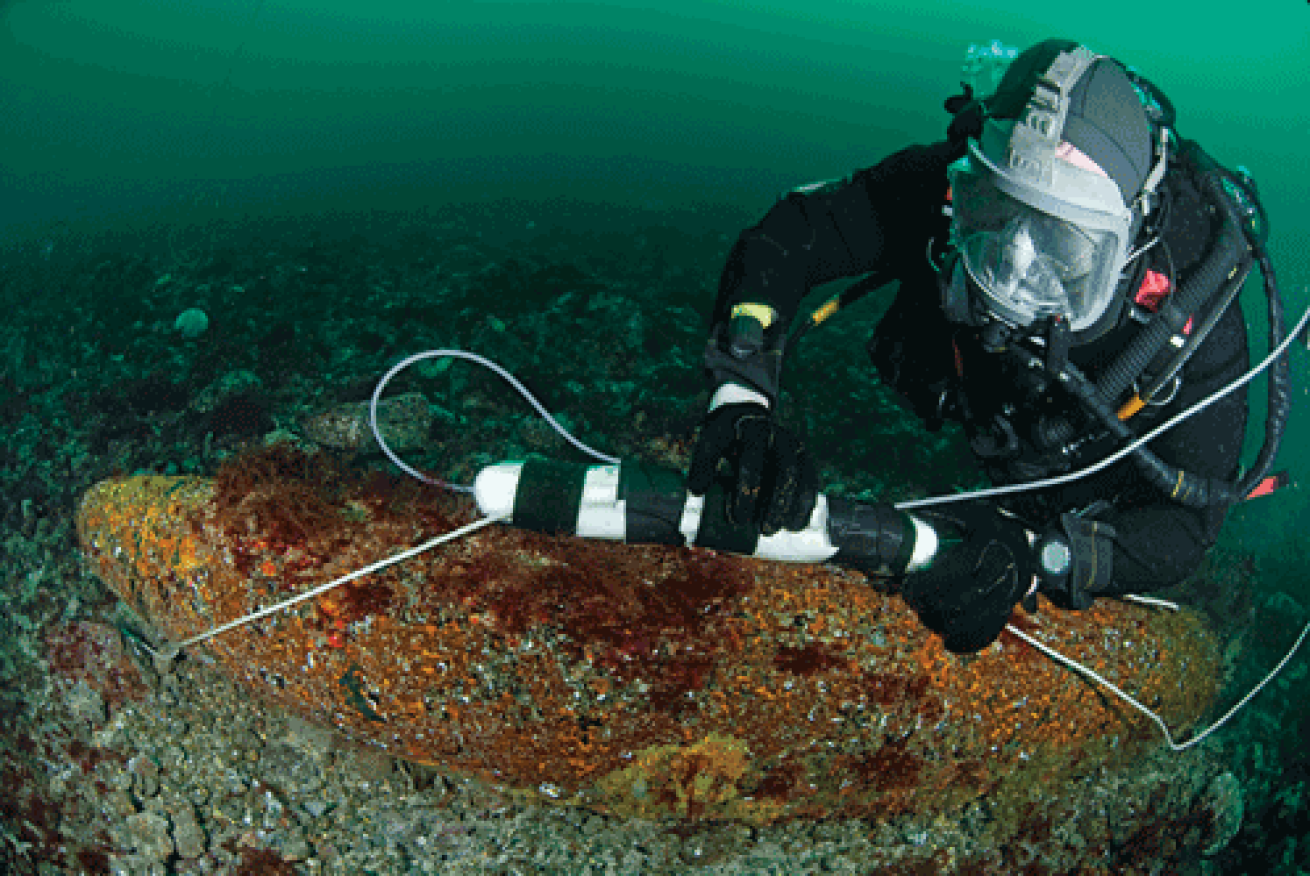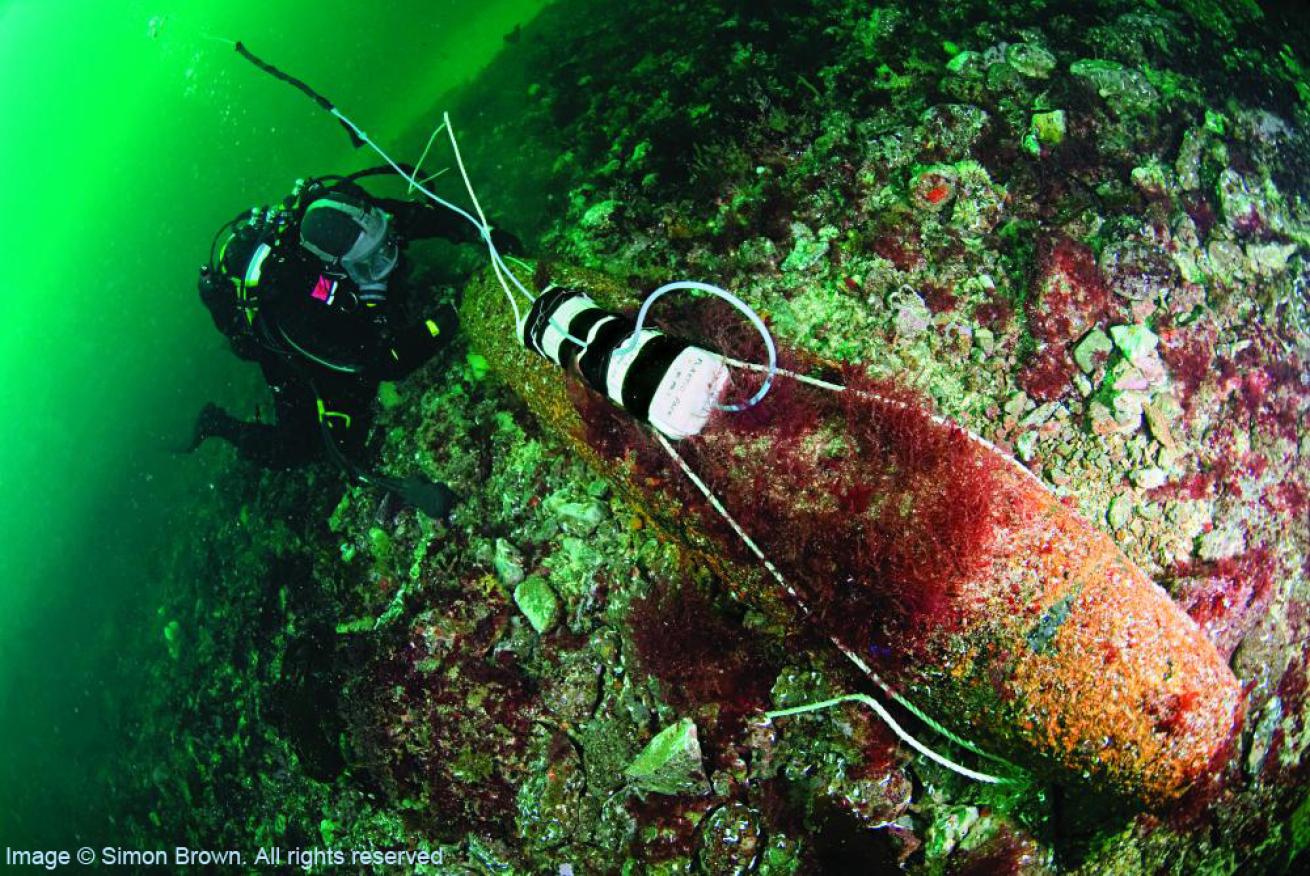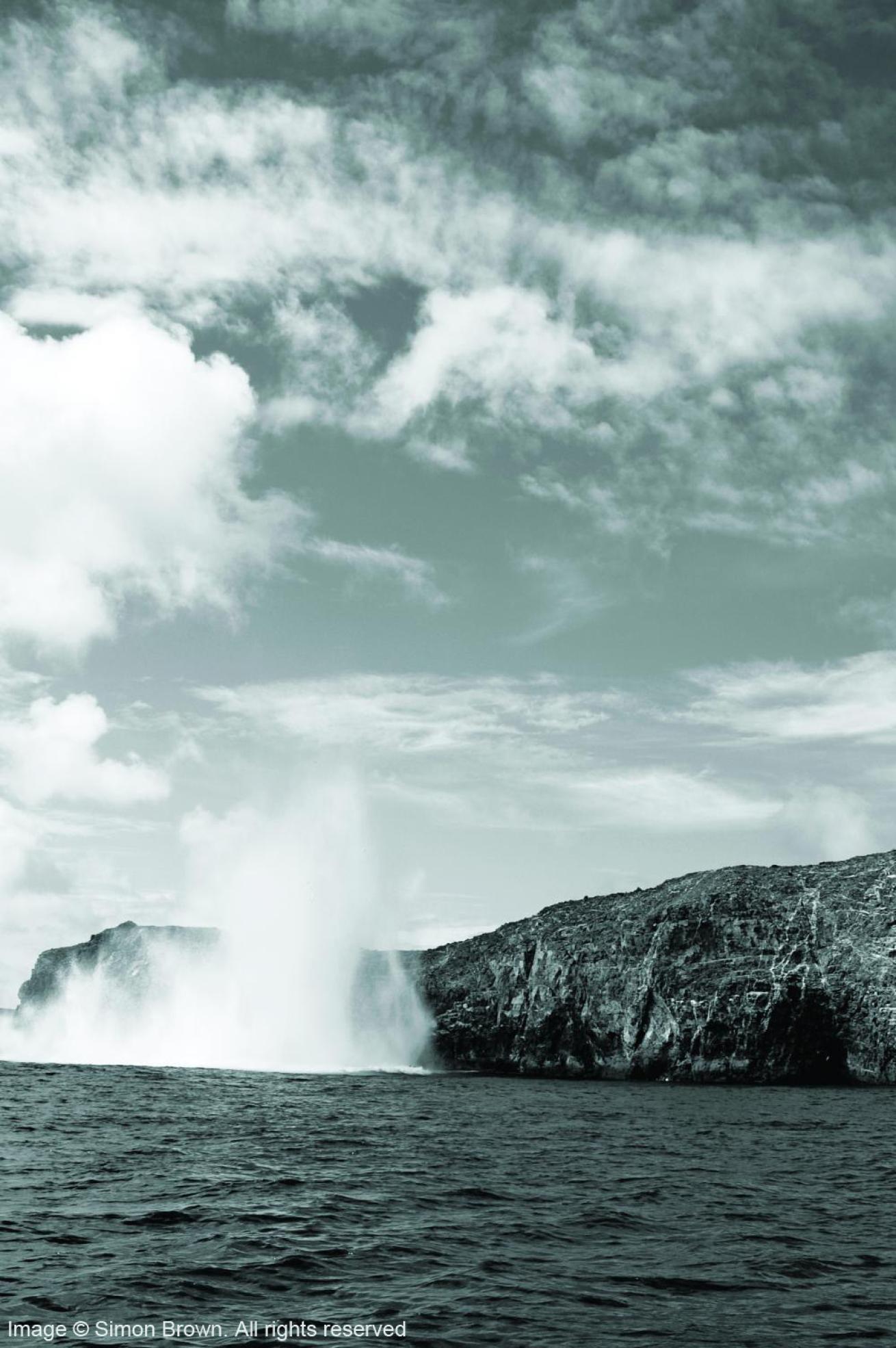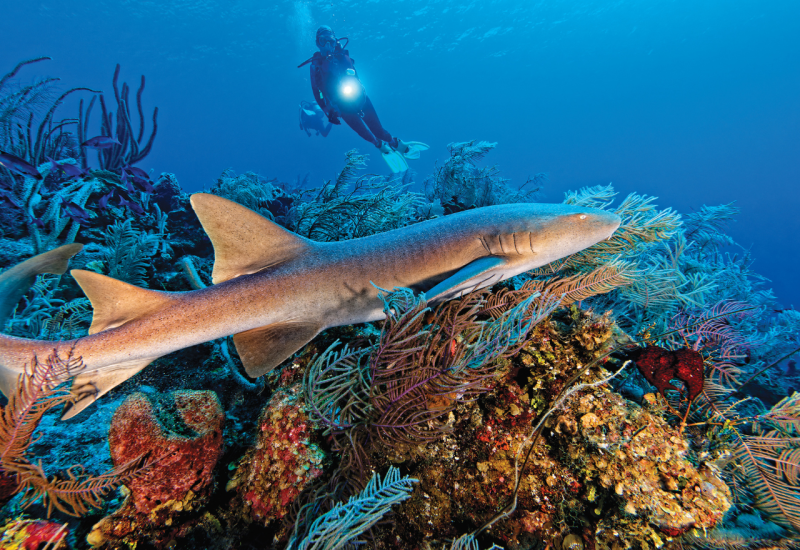What It's Like...To Detonate an Underwater Bomb

What's it like to detonate a bomb underwater? It's a crazy job for a scuba diver — but it's also just like fireworks on the Fourth of July, performed on a military scale, and I can’t help grinning like a kid.
I’m sucking gas through the regulator, wheezing like a 40-a-day, tar-in-the-arteries smoker. Trying to keep up with a fit Royal Navy clearance diver like Yorkie Haran is futile, but he’s stopped finning to inspect something. It’s a 500-pound bomb, and 20 feet away I can see a second rusting bomb on the seabed. I’m surrounded by high explosives deep inside a NATO bombing range. Dropped at supersonic speeds, the bombs didn’t detonate but have spent time quietly rusting under the waves. My breathing slows but the adrenaline still flows, my heart pounding under my drysuit. I wonder how the fuse has taken to salt water. Haran pokes around the rear of the bomb, looking for the fuse, and gives me the thumbs up. It’s live ordnance. The bomb is marked, and we head to the surface. The search phase is over; it’s demolition time. One hour later I’m back alongside the bomb with a second clearance diver, John Anderson, and he’s carrying a 4-pound pack of plastic explosive –– known in Royal Navy-speak as “Bang.” The Navy believes there are few problems in the world that plastic explosives can’t solve, and underwater bomb disposal isn’t a subtle “Red or blue?” wire-cutting exercise or ticking-clock fuse removal. The Bang is strapped to the casing of the bomb, and I click away with the camera, relaxed in the knowledge that if anything goes wrong now, my passing will be both quick and painless. Anderson is relaxed but not careless, posing for a photo as he rests his folded arms on the explosive. This isn’t leisure diving, and 12 minutes after leaving the surface, I’m back on the boat. The detonators are readied, and with fuses burning, we motor away. Five minutes later there’s a dull whump, followed by a 150-foot plume of seawater. The seagulls wheel in, squawking and screeching as they scoop up the fish brought to the surface by the explosion. It’s just like fireworks on the Fourth of July, performed on a military scale, and I can’t help grinning like a kid.

..
What's it like to detonate a bomb underwater? It's a crazy job for a scuba diver — but it's also just like fireworks on the Fourth of July, performed on a military scale, and I can’t help grinning like a kid.
I’m sucking gas through the regulator, wheezing like a 40-a-day, tar-in-the-arteries smoker. Trying to keep up with a fit Royal Navy clearance diver like Yorkie Haran is futile, but he’s stopped finning to inspect something. It’s a 500-pound bomb, and 20 feet away I can see a second rusting bomb on the seabed. I’m surrounded by high explosives deep inside a NATO bombing range. Dropped at supersonic speeds, the bombs didn’t detonate but have spent time quietly rusting under the waves. My breathing slows but the adrenaline still flows, my heart pounding under my drysuit.

..
I wonder how the fuse has taken to salt water. Haran pokes around the rear of the bomb, looking for the fuse, and gives me the thumbs up. It’s live ordnance. The bomb is marked, and we head to the surface. The search phase is over; it’s demolition time. One hour later I’m back alongside the bomb with a second clearance diver, John Anderson, and he’s carrying a 4-pound pack of plastic explosive –– known in Royal Navy-speak as “Bang.” The Navy believes there are few problems in the world that plastic explosives can’t solve, and underwater bomb disposal isn’t a subtle “Red or blue?” wire-cutting exercise or ticking-clock fuse removal. The Bang is strapped to the casing of the bomb, and I click away with the camera, relaxed in the knowledge that if anything goes wrong now, my passing will be both quick and painless.

..
Anderson is relaxed but not careless, posing for a photo as he rests his folded arms on the explosive. This isn’t leisure diving, and 12 minutes after leaving the surface, I’m back on the boat. The detonators are readied, and with fuses burning, we motor away. Five minutes later there’s a dull whump, followed by a 150-foot plume of seawater. The seagulls wheel in, squawking and screeching as they scoop up the fish brought to the surface by the explosion. It’s just like fireworks on the Fourth of July, performed on a military scale, and I can’t help grinning like a kid.










